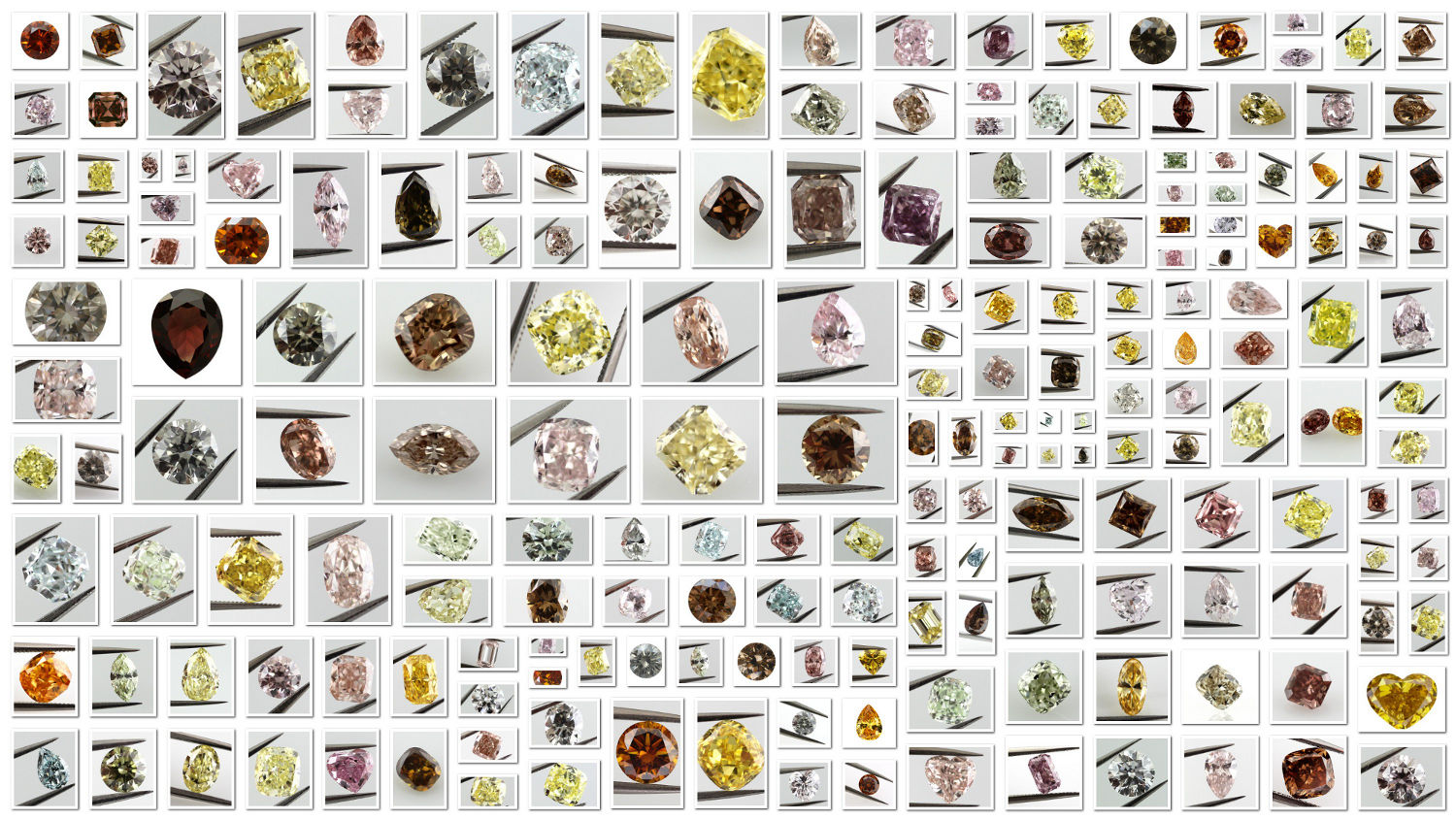Diamonds
The traditional white diamonds (colorless diamonds) that we all know about, like those found in most classic engagement rings, pendants and other diamond jewelry, are created from a complex process involving super-heated, highly pressurized carbon molecules close to the Earth’s core. But these are not the only diamond types out there…
For better understanding, first things first:
How are Diamonds Formed?
All diamonds start the same. Here is a great clip by the National Geographic channel (less than 3 minutes long) explaining and showing how diamonds are made:
What are Colored Diamonds?
Natural Colored diamonds are created in the same fashion, with one unique difference. When foreign particulates are trapped during the crystallization process from which diamonds are formed, it effects and alters the chemical process and thus, changes the outcome. The result is a beautiful, rare, and exceptional diamond with unique colorings – called natural colored diamond.
How do Colored Diamonds get Their Color?
Different trace minerals and particulates result in different hues, as well as different intensities of those hues.
 Brown, Red & Pink Diamonds
Brown, Red & Pink Diamonds
These diamonds owe their color to a combination of intense pressure and heat. While still buried deep within the earth, these factors cause distortions in the crystal lattice that absorb green light, thus reflecting a pink hue. Ultra-rare red diamonds, which are essentially just deeply colored pink diamonds, have the same cause of color.
 Gray & Blue Diamonds
Gray & Blue Diamonds
For the most part, blue diamonds get their color from boron. When this impurity is present, it bonds to carbon in the crystal structure, absorbing red, yellow and green areas of the color spectrum.
Green Diamonds
It’s not until the last leg of their journey to the earth’s surface that diamonds get their green color. Just as they are about to leave the uppermost layer of the crust, these stones absorbs naturally occurring radiation, which causes them to reflect a green hue by absorbing red and yellow light.
Violet and Purple Diamonds
So far, all scientists are certain of is that the cause of color for purple and violet diamonds is crystal distortion. However, it is believed that the presence of hydrogen may be partly responsible for their hue.
Orange and Yellow Diamonds
The remarkable hue of yellow and orange diamonds can be attributed to one element: nitrogen. While a diamond is forming, nitrogen atoms will arrange in such a way that that blue light is absorbed, thus producing a yellow color. A specific grouping of nitrogen atoms is also responsible for the shading of orange diamonds, but will absorb light in both the blue and yellow spectrums.
Colored Diamonds Amazing Color Combinations
 Colored diamonds come in as many hues and intensities as nature can possibly muster. The reason is not only can trace minerals influence color, but also variations in the amount of pressure exerted to produce the diamonds, as well as radiation levels in the Earth’s mantle layer can also influence diamond colors. In order to produce a particular hue, thousands of variables must be present in just the right amounts, at just the right times. Since scientists have never been able to observe a natural diamond being formed, the exact type and proportion of variables necessary are nearly impossible to determine. However, there are basics that have become understood.
Colored diamonds come in as many hues and intensities as nature can possibly muster. The reason is not only can trace minerals influence color, but also variations in the amount of pressure exerted to produce the diamonds, as well as radiation levels in the Earth’s mantle layer can also influence diamond colors. In order to produce a particular hue, thousands of variables must be present in just the right amounts, at just the right times. Since scientists have never been able to observe a natural diamond being formed, the exact type and proportion of variables necessary are nearly impossible to determine. However, there are basics that have become understood.
For example, as mentioned above, boron produces natural blue diamonds, while hydrogen will produce violet and purple colored diamonds. Likewise, nitrogen in the right amounts will produce orange or yellow diamonds. Diamonds in the red to brown category have been scientifically proven to have an internal structure far more compressed than average white diamonds. According to the Natural Color Diamond Association, argyle diamonds show nearly ten times the amount of high pressure graining as more traditional diamonds. This graining is evidence of high-pressure conditions well above what it would take to form a white diamond.
As a result, even though there are only 12 base colors, there are hundreds of colored diamonds color combinations.
How are diamonds Colored?
In the above section we covered all of the reasons for natural colored diamonds. However, in recent years with the rise of popularity and demand for those diamonds, and with it the rise in their prices, the market for treated and color enhanced diamonds has evolved tremendously.
Important – Color treated diamonds are regular natural diamonds that were color enhanced – these are not lab grown diamonds. Therefore, their price is higher than the low color quality they were before the treatment.
The idea is to take diamonds with colors that are not desired – like pale yellows – and to enhance it dramatically (pale yellow to vivid yellow) or even to change it altogether to blue, purple and red.
The main methodology is called HPHT – High Pressure High Temperature. Interestingly, this same procedure that is used to enhance to strong colored diamonds can be also used to “paint” colorless diamonds. Taking cheap very light brown diamonds and turn them into D colorless diamonds.













































Leave a reply